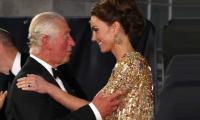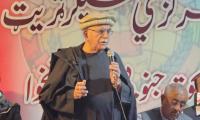One may not always agree with Minister for Science and Technology Fawad Chaudhry, but on moon-sighting he has been spot-on. He probably doesn’t realize that moon-sighting with time has attained a pomp of its own. That’s the only time the public gets to see long telescopes. Left to scientific calculations for moon-sighting, as the Gulf countries and Saudi Arabia practise, would do away with the protocol and importance of moon-sighting. There won’t be any need of either the chairman or his committee members.
Some of the leading scholars and astronomers in the UAE suggest that Muslim countries should employ scientific methods for moon-sighting instead of relying solely on the method of seeing one with a naked eye. It has been a rare occasion when the holy month of fasting began on the same date throughout the country. Similarly, celebrating two Eids at the end of month has been quite common.
Muslim scholars have described two methods of sighting the moon. One is based on astronomical calculations and the other on astronomical sighting. Turkey and Malaysia follow the school of astronomical calculations while the GCC countries and Saudi Arabia follow the method of astronomical sighting. Whatever procedure is adopted to sight the moon, the guiding principle must be to maintain unity among the faithful.
The Central Ruet-e-Hilal Committee was set up in 1974 with the sole aim of sighting the moon every month and announcing it. Moons come and go without anybody caring much about them unless the sighting determines the first and the last day of Ramazan. Somehow, the prominent religious leaders of different persuasions differ on these two occasions more than they do during the rest of the year. They know that the entire nation impatiently awaits their verdict of the sighting or not sighting of the moon.
Initially, the Ruet-e-Hilal Committee has nine members, which later increased to fifteen, perhaps, with the idea that fifteen members would sight the moon better than nine members would. The chairman of the committee was to be appointed for three years. It’s a different matter though that the present chairman, Mufti Muneeb-ur-Rehman, has occupied the slot for almost two decades. Many imagine that when Mufti sahib first occupied the chair Fawad Chaudhry was into playing marbles.
But why are the two occasions usually fraught with confusion? Why we haven’t been able to settle the matter either way? Ideally, the moon should be sighted by observing it on the horizon.
Since it’s not always possible because of various factors, such as the inclement weather prevailing at the time, the next most suitable option is to rely on scientific methods of moon-sighting. This would help avoid the confusion of starting Ramazan on different dates and celebrating two Eid festivals.
During the days of our Prophet (upon him be peace), moon-sighting was carried out by the naked eye since no scientific methods were available. Now the situation is different. Besides sighting the moon with a naked eye, we can easily depend on precise scientific instruments and calculations. In fact, anyone with a smartphone can be an astronomer if s/he visits ‘Google Sky’ and uses GPS to sight the moon.
If religious scholars in Peshawar think that the moon appears there first, why not entrust them with the responsibility of sighting the moon. The management of Peshawar's Jamia Masjid, Qasim Ali Khan, claims to have sighted the moon for the last countless years or so. The Ruet-e-Hilal Committee along with the management of that mosque could be asked to sight the moon with mutual consultation. What matters the most is to celebrate Eid on the same day, which will show much needed religious harmony on an auspicious occasion.
The writer is a freelance columnist based in Lahore.
Email: pinecity@gmail.com
Earth Day protests carry a vital message that is relevant 365 days a year. — AFP File Earth Day is celebrated every...
People walk along a market in Lahore on May 17, 2023. — AFP/FileMany of us had hoped that the general election...
Packs of freshly printed $20 notes are processed for bundling and packaging at the US Treasury's Bureau of Engraving...
People stand in line up as election officials check their ballot papers during voting general election at a polling...
Women show their voter identity cards as they stand in a queue before casting their votes in Agartala. — PTIThe 18th...
Former prime minister Imran Khan. — Instagram/ imrankhan.ptiAn old saying has it that “when you dance with the...







